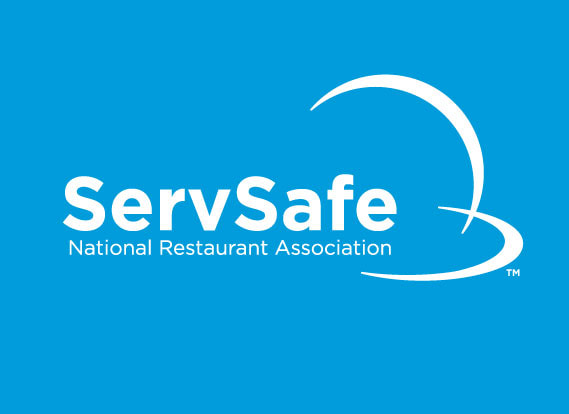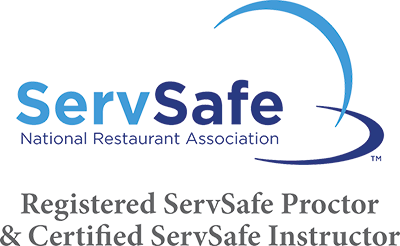Quick Tips for Effectively Finishing Your ServSafe Food Handler Training Course Online
Quick Tips for Effectively Finishing Your ServSafe Food Handler Training Course Online
Blog Article
Comprehensive Food Handlers Training for Health and Security
In today's swiftly progressing food service landscape, comprehensive food trainers training has emerged as a vital component for ensuring hygiene and safety and security. By instilling important methods associated to hand health, food storage, and cleanliness, this training not only mitigates the danger of foodborne diseases however likewise strengthens conformity with regulatory criteria.
Value of Food Safety Training

Furthermore, food safety and security training helps to ensure that employees understand current policies and guidelines, which are essential for keeping operational licenses and avoiding costly charges. Regular training sessions likewise serve as a system for strengthening ideal techniques, consequently lowering the likelihood of human error, which commonly acts as a leading cause of food contamination.
Furthermore, buying food safety and security training can enhance a facility's track record, as consumers increasingly prioritize eating experiences that mirror high safety requirements. Such proactive steps not only secure consumers but also add to the long-lasting success of food businesses. In summary, extensive food security training is an important element of food service operations, directly influencing both public health and wellness and organization sustainability.
Secret Concepts of Health
Preserving high standards of health is crucial in any kind of food taking care of environment to avoid contamination and make certain the safety and security of customers. The key principles of hygiene incorporate a number of crucial methods that food handlers should consistently use.
First, hand hygiene is critical; food trainers should wash their hands thoroughly with soap and water prior to and after dealing with food, in addition to after utilizing the bathroom or touching any type of possibly infected surface areas. Tools and surfaces need to be frequently cleansed and sterilized to get rid of microorganisms. This includes tools, cutting boards, and countertops, which must be kept in a clean problem.


Appropriate food storage space is likewise essential; raw foods must be saved separately from cooked or ready-to-eat things to prevent cross-contamination. servsafe. Furthermore, keeping proper temperature level controls is essential; subject to spoiling things need to be kept at risk-free temperature levels to hinder microbial development
Last but not least, individual hygiene can not be neglected. Food trainers need to use clean apparel, usage hair restraints, and stay clear of working when ill. By sticking to these essential principles of health, food trainers can considerably reduce the risk of foodborne ailments and promote a safer dining experience for all customers.
Usual Foodborne Illnesses
Although lots of foodborne illnesses can be prevented via appropriate health and safe food dealing with techniques, they stay a substantial public health and wellness issue. Foodborne virus can cause try this site a selection of illnesses, ranging from light gastrointestinal distress to extreme issues and even fatality.
Usual foodborne diseases include salmonellosis, triggered by Salmonella germs, commonly connected to undercooked chicken and eggs. Another widespread disease is listeriosis, related to unpasteurized dairy items and read ready-to-eat meats, which can be especially hazardous for pregnant women and immunocompromised people. Norovirus, frequently acquired from contaminated food or surface areas, is recognized for its quick spread and capacity to create outbreaks in common setups.
Escherichia coli (E. coli) infection, notably linked with undercooked ground beef and contaminated produce, can lead to extreme abdominal cramps and kidney failing sometimes. Additionally, Clostridium perfringens, frequently discovered in big quantities of food that are improperly kept, can cause gastrointestinal disorder with signs showing up soon after consumption.
Recognizing these health problems is crucial for food trainers, as recognition can dramatically decrease the threat of contamination and secure public health and wellness. Correct education and training are crucial elements in combating foodborne illness.
Ideal Practices for Food Handling
Efficient food managing techniques are crucial in preventing the spread of foodborne ailments. Firstly, correct hand hygiene is crucial; food handlers should clean their hands extensively with soap and water before and after managing food, specifically raw meat or chicken - servsafe manager. This straightforward action significantly lowers the threat of cross-contamination
Secondly, preserving ideal food storage temperature levels is important. Consistently sanitize kitchen counters, reducing boards, and utensils, particularly after preparing raw foods. Use separate cutting boards for raw and ready-to-eat foods to better reduce contamination threats.
Furthermore, when preparing food, it is necessary to comply with the concept of "very first in, initially out" (FIFO) to handle inventory properly and decrease perishing. Finally, constantly read and stick to food tags for safe cooking temperatures and dealing with guidelines. By executing these finest techniques, food trainers can significantly enhance food safety and shield public wellness.
Applying a Security Culture
Developing a safety and security society within a food handling setting Click This Link is vital for cultivating a commitment to food safety amongst all team member. This society emphasizes the relevance of food safety as a shared obligation, encouraging employees to focus on health methods continually.
To implement a safety society, companies should start by supplying extensive training that deals with food handling methods, potential hazards, and the importance of individual hygiene. Educating sessions must be interactive and tailored to the specific functions of employee, making certain relevance and involvement.
Furthermore, leadership plays an important role in developing this society. Management needs to design safe techniques and connect the importance of food safety and security consistently. Identifying and awarding staff members that support security requirements can additionally strengthen these behaviors.
In addition, open interaction networks have to be established, enabling personnel to report safety and security concerns without worry of repercussion. Routine safety and security audits and feedback sessions can aid recognize areas for renovation and reinforce responsibility.
Ultimately, cultivating a safety and security society not just improves compliance with food safety policies but additionally protects public wellness, fosters employee morale, and adds to the total success of the food handling establishment.
Verdict
In conclusion, detailed food handlers training plays an essential function in advertising health and safety within food solution facilities. By equipping employees with crucial expertise about food safety principles, usual foodborne illnesses, and ideal techniques for dealing with food, such training dramatically minimizes health dangers. Furthermore, fostering a culture of safety and security improves the establishment's track record and straightens with consumer expectations for high safety criteria, ultimately contributing to public health security and the total success of the food service sector.
In today's swiftly developing food service landscape, detailed food handlers training has emerged as an important component for making certain hygiene and safety.Food safety and security training is critical for maintaining high criteria in food handling and prep work, with researches showing that correct training can minimize foodborne ailments by up to 30%. In recap, detailed food safety training is an essential element of food solution operations, directly affecting both public wellness and business sustainability.

Report this page